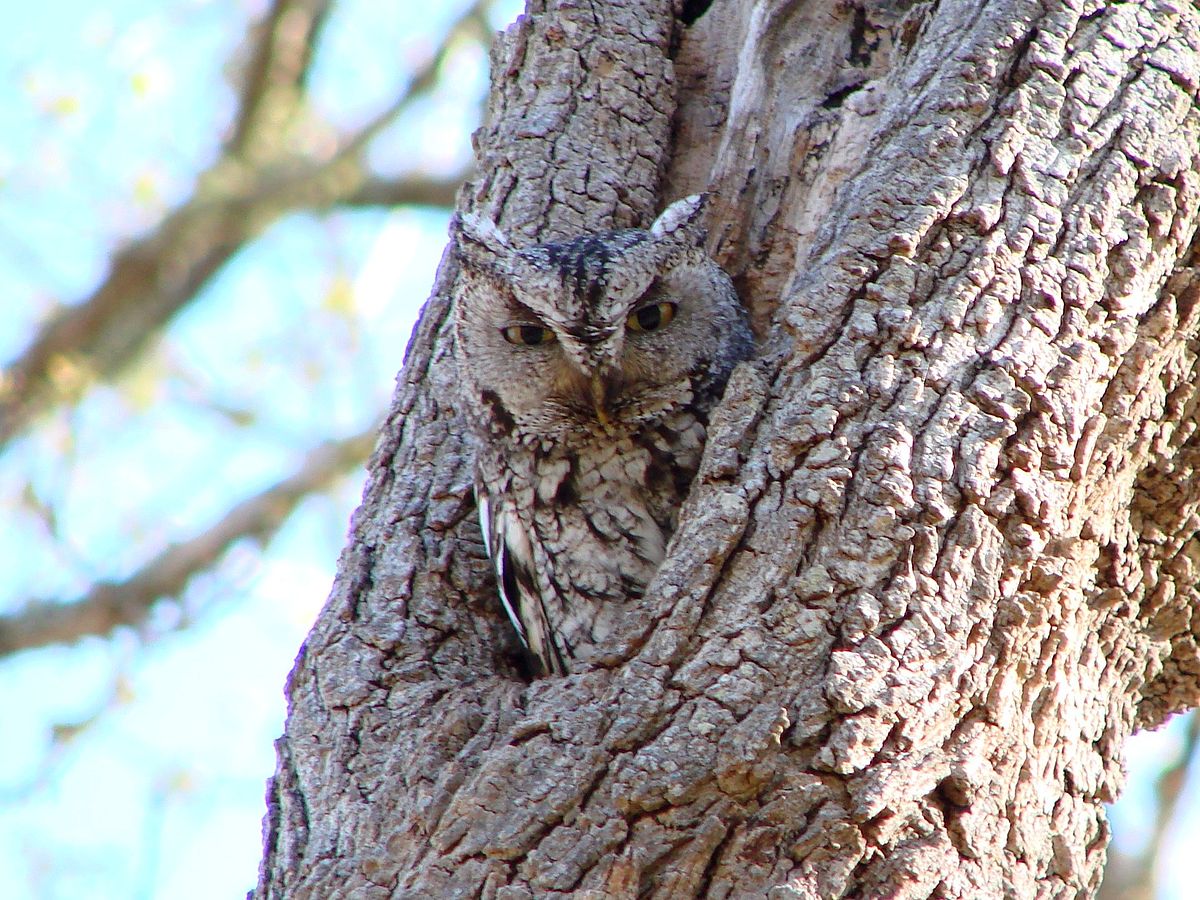Offer
Provide additional details about the offer you're running.
Provide additional details about the offer you're running.
Provide additional details about the offer you're running.

Feature Image By Zach from Gamboa, Panama (Screech Owl 02) [CC BY-SA 2.0 (http://creativecommons.org/licenses/by-sa/2.0)], via Wikimedia Commons
An extremely camouflaged owl, the Eastern Screech Owl can sometimes be difficult to spot during daylight hours due to their superbly blended plumage, but can often easily be identified by its thrilling “screech” sounds.
These short and stocky raptors can be found in well-treed areas often hiding in small nooks and crannies in large trees through much of the eastern United States and southern Ontario. These owls are extremely active during nighttime hours feeding on small birds and mammals and a surprisingly large amount of insects and invertebrates like crayfish, tadpoles, frogs, and lizards.
Unlike other species, the Eastern Screech Owl’s plumage does not lend much in the way of identification when attempting to decipher the sex of the bird. As with a large variety of raptors, the males of the species are quite smaller than their female counterparts, which can only be helpful if and when you happen to spot a pair of these owls.
When it comes to vocals these owls, as their name suggests, do not disappoint. Males and females both take part in song and are well known for their exciting and even-pitched trill which comes in a variety of notes. Sounds vary depending on situational factors like those of most other birds, ranging from a monotonic trill between pairs or families and a descending trill and whinny often used for defending territory.
Their calls or ‘screeches’ however are usually always heard out of duress as these birds will aggressively screech and bill-clap to defend their next or fledglings. In addition to the screech, these owls will also combine a chuckle-rattle to further ward of intruders and warn others of danger.
If you happen to hear the night time sounds you believe to be an Eastern Screech Owl in the early spring before breeding season, know that these owls can and will use a nesting box when placed properly.
Let us know if you have had any experiences with Eastern Screech Owls in your neck of the woods, we’d love to hear about it!
High Quality Blend